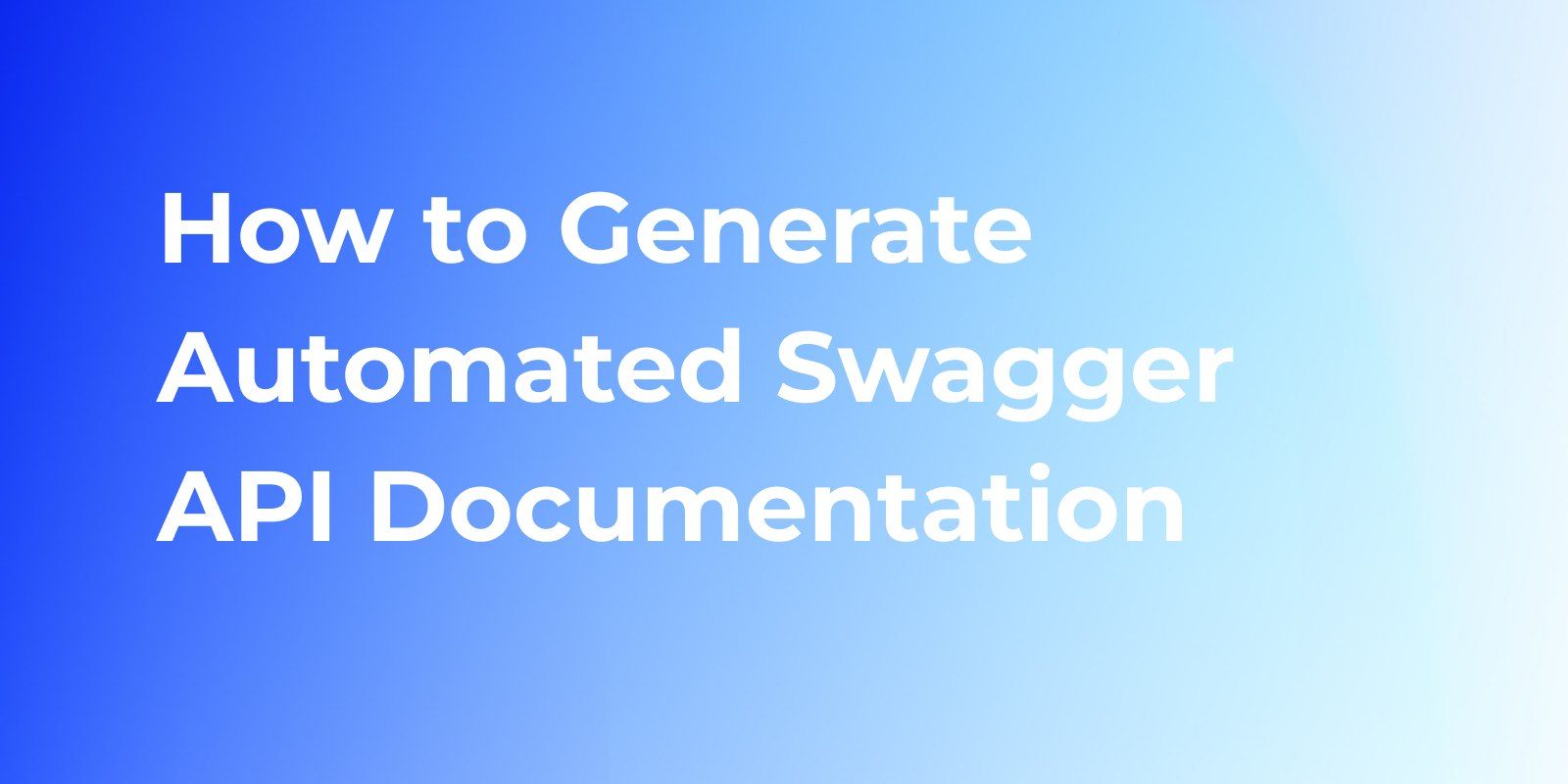How to Export Swagger Documentation to PDF Files
You may find yourself in a situation where you need to export Swagger documentation into PDF or files for convenient sharing and archiving. In this blog post, we will guide you through the process of exporting Swagger documentation into both PDF formats.
In the world of web development, creating and sharing comprehensive API documentation is vital. Swagger, or the OpenAPI Specification, is a widely used tool for defining and documenting RESTful APIs.
However, you may find yourself in a situation where you need to export Swagger documentation into PDF or files for convenient sharing and archiving. In this blog post, we will guide you through the process of exporting Swagger documentation into both PDF formats in different ways.
The Importance of Exporting Swagger Documentation
Why is it essential to export Swagger documentation into PDF formats? You mentioned that you've been using the Swagger UI to display your REST web services, which are hosted on a server.
However, accessing the Swagger UI requires an internet connection and access to that particular server. To work offline and share the documentation with others who may not have server access, exporting the Swagger documentation to a PDF format can be a great solution.
Here are a few key benefits of having your Swagger documentation in a PDF format:
- Offline Accessibility: With a PDF, you can access and reference your API documentation even when you're not connected to the internet or the server where the Swagger UI is hosted.
- Easy Sharing: PDFs are widely compatible and can be easily shared with teammates, clients, or anyone who needs to understand your API's functionality, without requiring them to have access to the server.
- Archival Purposes: PDF files are suitable for long-term archiving, ensuring that your API documentation is preserved and can be referenced in the future, even if the hosted Swagger UI is no longer available.
- Flexibility: Some users may prefer working with a PDF format, especially if they need to annotate, highlight, or print the documentation. Offering both the Swagger UI and a PDF version caters to different user preferences.
How to Export Swagger Documentation to PDF
Exporting Swagger documentation into a PDF file is a relatively straightforward process. Let's break it down step by step in several ways.
1. Using Swagger to PDF Online Tool
If you want to find an easy way to generate a PDF file from Swagger API documentation, the online tool is good for you.
Swagger to Pdf is a nifty online tool found at swdoc.org that whips up API documentation in sleek PDF form using your provided swagger.json specification. It harnesses the power of the Swagger2Markup converter and the mighty AsciiDoctor.
The approach mirrors the previous solution. First, Swagger2Markup takes your swagger.json file and transforms it into AsciiDoc files. Then, the brawny AsciiDoctor parses those files, sculpting a document model before chiseling it into a dashing PDF.
There are two ways to use Swagger to Pdf, one is generating using URL, and another is using JSON.

Now, we will show you the first way in detail. First, you need to prepare API documentation and copy the URL, then paste it into the Swagger to PDF online tool. Just click the "Generate" buttom.

When finishing the process, you can click the "Download" to save the PDF Swagger documentation.

2. Converting the Swagger Documentation to PDF formats
If you just want to finish the whole process in Swagger, here is a traditional way for you.
Step 1: Access Swagger Editor
Start by opening the Swagger Editor or Swagger Hub in your web browser. If you don't have Swagger documentation ready, you can create one or import an existing specification.

Step 2: Review and Validate
Before exporting, thoroughly review your Swagger documentation to ensure accuracy, completeness, and proper formatting. Use the built-in validation tools to catch and rectify any potential errors.
Step 3: Export OpenAPI Documentation as ZIP File
At the upper section, select 'Generate Client' and then choose 'HTML2,' which will allow you to download the ZIP file.

The Swagger Editor will then generate a ZIP file containing your API documentation.
Step 4: Convert the PDF and Print from the PDF
This file is a static HTML page that can be further converted to a PDF format through your web browser, utilizing the integrated Microsoft Print to PDF printer, Adobe Acrobat, or any other tool of your choice. You can choose to share it directly with your team, and clients, or store it for future reference.

Apidog: Supports Exporting API Documentation in Different Formats
Apidog excels in providing flexibility for your API documentation by offering various export formats, interactive HTML pages, static HTML pages, Markdown, Swagger and plain text.

This wide range of formats ensures that your API documentation caters to the distinct preferences and requirements of your target audience, fostering a better understanding and utilization of your APIs. With Apidog, versatility in API documentation is at your fingertips, ensuring your documentation meets the needs of developers and teams with various preferences.
Conclusion
Exporting Swagger documentation into PDF formats enhances the accessibility, shareability, and archival capabilities of your API documentation. Whether you're managing a small-scale project or a large API for a substantial organization, providing documentation in these formats ensures that developers and stakeholders can access and use the information effectively.
By following the simple steps outlined in this blog post, you can effortlessly export your Swagger documentation into PDF files. These formats offer versatility and compatibility, making them valuable resources for developers and organizations. So, the next time you need to share or archive your API documentation, consider the advantages of providing it in PDF formats, and use Swagger to simplify the process.1




